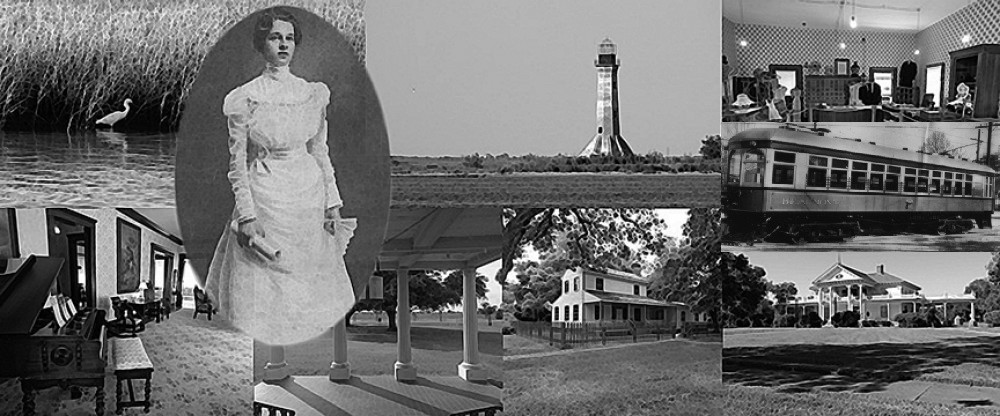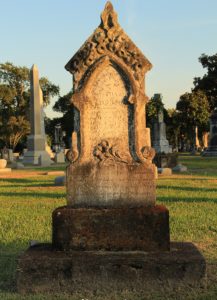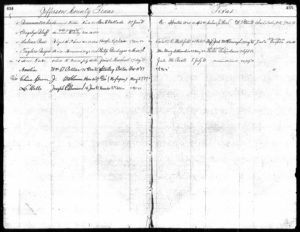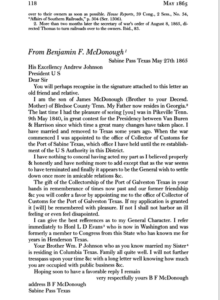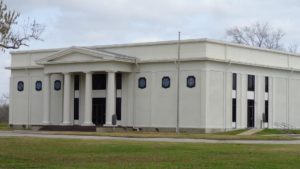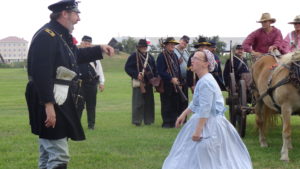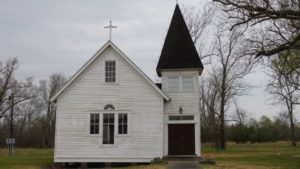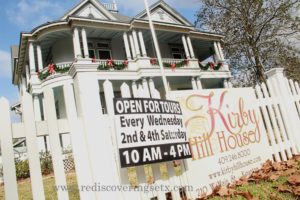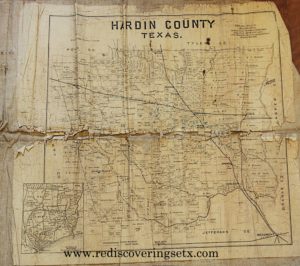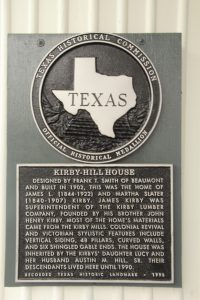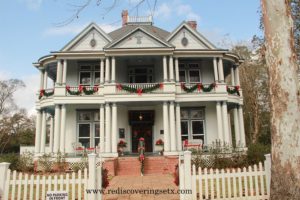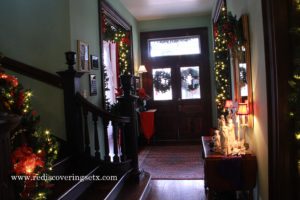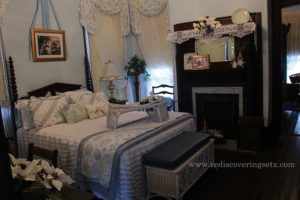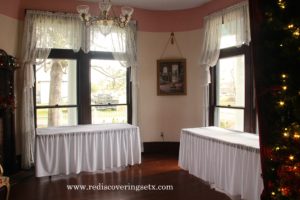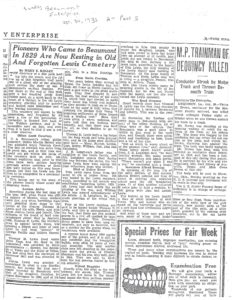 While looking through historian Bill Quick’s research papers, located in the Sam Houston Research Center in Liberty, I came across a file about Thomas H. Lewis. I discovered that the Lewis family was one of the first three families to settle in what would eventually become Beaumont. That was back in 1830. Among Mr. Quick’s papers, I unearthed an interesting copy of an old newspaper article, dated October 30, 1932 from the Beaumont Enterprise, entitled, ‘Pioneers Who Came to Beaumont in 1829 are Now Resting in Old and Forgotten Lewis Cemetery’, written by a Mary E. Kelley. The article spoke of an old cemetery located “a few hundred yards from Calder road, on a quiet knoll in the heart of the thicket.” This description would probably place the old cemetery on the old Lewis Survey, which covered the area from Gladys Avenue to just South of Harrison Avenue, with its west and east borders extending from Central Drive, to North 14th Street. In 1932, the area to the north of Calder Road, which passed the five-year-old Phelan Mansion, is very likely to have been a thicket. On Google Earth, there is a 1938 aerial view of Jefferson County, which shows little development in that area at the time.
While looking through historian Bill Quick’s research papers, located in the Sam Houston Research Center in Liberty, I came across a file about Thomas H. Lewis. I discovered that the Lewis family was one of the first three families to settle in what would eventually become Beaumont. That was back in 1830. Among Mr. Quick’s papers, I unearthed an interesting copy of an old newspaper article, dated October 30, 1932 from the Beaumont Enterprise, entitled, ‘Pioneers Who Came to Beaumont in 1829 are Now Resting in Old and Forgotten Lewis Cemetery’, written by a Mary E. Kelley. The article spoke of an old cemetery located “a few hundred yards from Calder road, on a quiet knoll in the heart of the thicket.” This description would probably place the old cemetery on the old Lewis Survey, which covered the area from Gladys Avenue to just South of Harrison Avenue, with its west and east borders extending from Central Drive, to North 14th Street. In 1932, the area to the north of Calder Road, which passed the five-year-old Phelan Mansion, is very likely to have been a thicket. On Google Earth, there is a 1938 aerial view of Jefferson County, which shows little development in that area at the time.
My first thought was to look through the Jefferson County, Texas Cemeteries book which was compiled by Mildred Wright and published in 1981. (Note: The book is available in PDF format as a free download from the Jefferson County Historical Commission website and is a great reference book for any researcher!) Wright’s book mentions an old cemetery located on Calder and Thomas Roads, and at first, I imagined I had found what I was looking for. However, since then, I have found the actual perimeters of the old surveys. The cemetery mentioned by Wright would have been located on the H. Williams Survey, and not on the Lewis Survey. Wright’s cemetery would have been located in the area now covered by the Westbrook Shopping Center.
Over the past few weeks, I have again tried to locate information on the Lewis cemetery. I visited the Sam Houston Research Center again to have another look through Quick’s file on Thomas Lewis, and to see whether I had perhaps missed another reference to the cemetery. I did find documents on other subjects that will warrant future research, but found nothing on the cemetery itself. 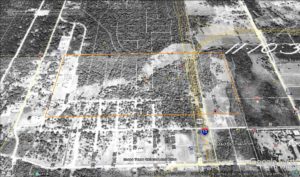
However, a few nights ago, I came across a website that gives you the exact perimeters for the Texas County surveys. I typed in ‘Lewis Survey’, and up came results far more accurate than I had derived from many hours spent trying to guess those borders. For someone like myself, devoid of mapping skills, this website is a godsend!
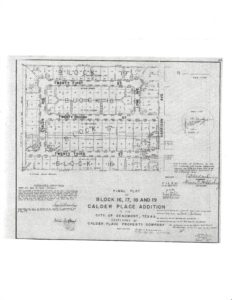 My next step was to email a fellow researcher about my interest in finding this old cemetery. She was able to find a couple of plats from the Calder Addition, developed in 1952. She also noticed a mention, which I had totally missed, in Wright’s book of a cemetery located north of Harrison, between 19th and 23rd Streets. This would definitely put the “missing” cemetery on the Lewis Survey. I am thankful for my research friends!
My next step was to email a fellow researcher about my interest in finding this old cemetery. She was able to find a couple of plats from the Calder Addition, developed in 1952. She also noticed a mention, which I had totally missed, in Wright’s book of a cemetery located north of Harrison, between 19th and 23rd Streets. This would definitely put the “missing” cemetery on the Lewis Survey. I am thankful for my research friends!
I think I am getting closer to finding the exact where-a-bouts of the old Lewis cemetery. Unfortunately, the plats provided no evidence of it, but I imagine that just indicates that they had moved it before the 1952 development. I did spend some time in the Magnolia and Forest Lawn cemeteries to see if Thomas H. Lewis, or the other few names I have from the Lewis cemetery, had been transferred, but as yet, I have found no evidence of such a move. I feel there is a mystery to be solved here: what became of those old families and their graves?
I will continue my search, but wish to give credit to both Mr. Quick, and Mrs. Wright. Without these two historians and their contributions to this County, and to Southeast Texas in general, my own journey would be far less interesting.
Old Survey locator link: http://www.earthpoint.us/TexasLandSurveySearchByDescription.aspx
Jefferson County, Texas Cemetery book links: http://www.co.jefferson.tx.us/Historical_Commission/Jeffco_History_Cemeteries.html
Jefferson County Historical Commission link: http://www.co.jefferson.tx.us/Historical_Commission/default.htm
